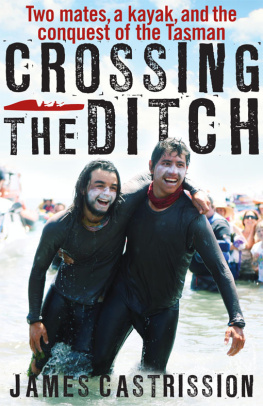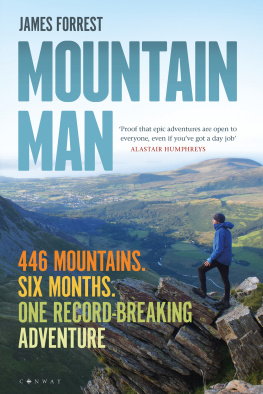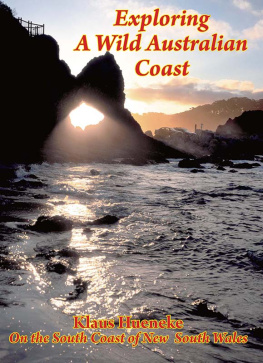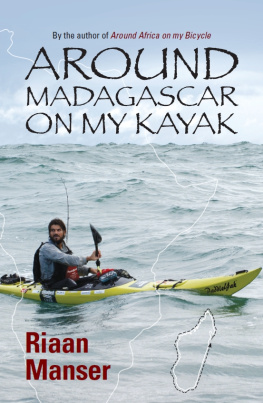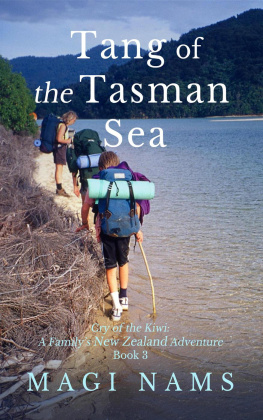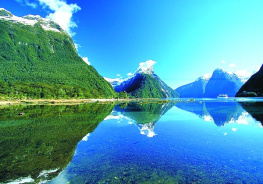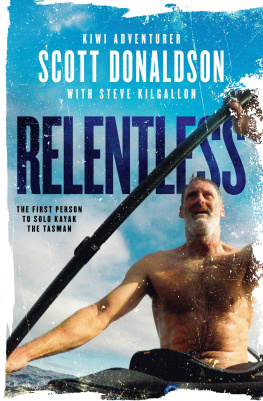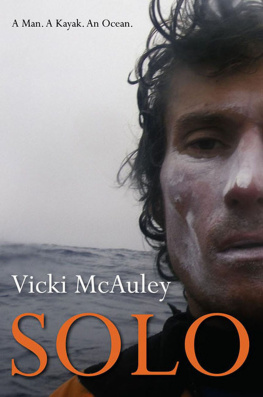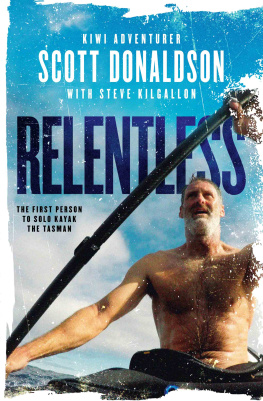This book is dedicated to the memory of Andrew McAuley.
Lost at sea, his spirit will live on forever.
It is not the critic who counts; not the man who points out how the strong man stumbles, or where the doer of deeds could have done them better. The credit belongs to the man who is actually in the arena, whose face is marred by dust and sweat and blood, who strives valiantly; who errs and comes short again and again; because there is not effort without error and shortcomings; but who does actually strive to do the deed; who knows the great enthusiasm, the great devotion, who spends himself in a worthy cause, who at the best knows in the end the triumph of high achievement and who at the worst, if he fails, at least he fails while daring greatly. So that his place shall never be with those cold and timid souls who know neither victory nor defeat.
THEODORE ROOSEVELT 26TH US PRESIDENT (190109)


by Dick Smith Ao, Adventurer
Imagine teaming up with a mate to paddle a small kayak more than 2,000 kilometres across one of the most dangerous seas in the world. Youll be faced with 10-metre seas, gale force winds, exhaustion and the possibility of not coming back.
Why would you ever do it?
James Castrission gives us the answer in one of the greatest adventure stories of the decade.
On 13 November 2007, James and Justin Jones left from Forster, NSW, hoping to become the first to paddle a sea kayak from Australia to New Zealand. On the shore were family and friends, some who were visibly distressed. Only nine months earlier Andrew McAuley, one of Australias most experienced sea kayakers, had attempted the same crossing and lost his life within sight of New Zealand.
Like many other adventurers, I would have understood if James and Justin had cancelled their expedition. As a 20-year-old Rover Scout, I sailed across the Tasman to Lord Howe Island. Our goal was to attempt climbing Balls Pyramid, one of the worlds tallest sea spires. Although our voyage was only a third of the way to New Zealand seasickness plagued most of us, and after 72 hours all we wanted was to step onto land. After that I decided that oceanbased adventuring was not for me.
In June 1993, I crossed the Tasman by balloon from New Zealand to Australia, skimming low over the waves and thankful not to be on the ocean surface. In 2006 I celebrated the 75th anniversary of the first solo flight across the Tasman by repeating Guy Menzies flight. I knew first-hand what a remote and lonely place the Tasman can be.
When I first heard of James and Justins plans to cross the ditch, I had no doubt theyd chosen one of the last great adventures. In an age of guided Mount Everest climbs and tourist trips to the ocean floor, their proposal was a breath of fresh air.
Like many others, they had met at school, enjoyed walking and climbing in the Blue Mountains and dreamed of greater challenges. What set them apart from their schoolmates was that they followed their dreams.
The odds were against them from the start. When James came up with the idea to kayak the Tasman, hed only spent one day on a yacht hed been 13 years old and seasick the whole time. Remarkably, Justin agreed to join him in the tiny sleeping cabin, despite suffering from claustrophobia.
Their trip would be physically demanding, dangerous and the outcome uncertain a perfect recipe for adventure. It reminded me why I started the journal Australian Geographic in late 1985, to encourage the spirit of adventure. I believed then, and still do, that without it, a nation will wilt and wither away.
In the 1980s, the Australian media tended to criticise young people taking risks and extending their boundaries. Fortunately, things have changed. James and Justin drew more than 1.6 million visitors to their expedition website that featured daily reports and photos sent in via satellite phone. Major television and radio stations interviewed them, with no real criticism, and nearly everyone got behind their extraordinary endeavour.
Its not just the media that seems to have matured. The days of planning an expedition on the back of an envelope are gone forever. As you read this book, youll realise the incredible commitment James and Justin made to proper planning, teamwork and reducing the risk of what is, by its very nature, a dangerous undertaking.
Over 18 months they searched out the experts to show them the latest technologies to reduce their risk, indeed make the trip possible. Having the best Global Positioning System and satellite phone was crucial, but as important were the high-nutrient freeze-dried foods and flameless heating pads for cooking. They couldnt carry enough fresh water in their little kayak so they relied on an electric reverse osmosis desalinator. When it failed their trip might have ended but theyd thought to bring a hand-held desalinator as back-up.
Of course they met the naysayers, the experts who said, I think youre flaming mad! Some questioned why anyone would endure the amount of hardship they would face. They were considered selfish for the stress they would bring to loved ones. But then adventure is a very selfish pursuit. In his story, James doesnt back away from the fact that its family and friends who often suffer greater distress than the adventurers themselves.
In the end, after all the planning, discussions of risk profiles, equipment preparation and training, the success of their endeavour came down to one thing their single-minded desire to succeed. It took them 1.7 million paddle strokes to cross the ditch, the longest-ever trans-oceanic, two-person kayaking trip in history.
When a big storm hit, they battened down the hatches and rode it out while back home people stayed up all night, checking their progress on the expedition website. James never got over his seasickness nor Justin his claustrophobia. At times it must have been a nightmare.
On day 27, a vast gyre of current pushed them backwards 150 kilometres, yet they refused to give up. They had planned on reaching New Zealand in 45 days at most they arrived on day 62. Despite the hardships, James writes beautifully of the wonders they encountered as they felt themselves being drawn closer to the natural world around them.
Kingsford Smith flew the first airplane across the Tasman in 1928 to be greeted by some 25,000 people. Nearly 80 years later, in an age when cynics would have us believe adventure is dead, an enthusiastic crowd just as large welcomed James and Justin to New Zealands shore.
In 2008 James and Justin were awarded the Australian Geographic Young Adventurer of the Year Award. They represent a new generation of adventurers with an exciting future exploring our deep oceans, dwindling icecaps and the limitless expanse of space. This book will give you clues as to what makes them tick.
It was day 36 out on the Tasman. Lying in a dreary, half-drowsy state in the cabin of our kayak Lot 41, trying to summon enough energy to wake properly and prepare dinner, a violent set of waves shook us hard. We were pulled through a two-storey wall of water, launched into the air, and spat out the other side. A piercing howl suddenly began reverberating in the cabin. Poking my head outside, I saw in the rapidly fading light that the bridle had wrapped around the rudder, with the full force of the anchor now on it. The seas were massive, with each wave battering the minuscule Lot 41

